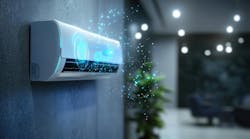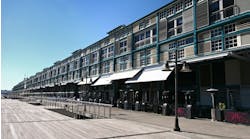The last decade has ushered in increased adoption of energy-efficient lighting technology, according to a new report by the Department of Energy.
The department’s U.S. Lighting Market Characterization tracked current conditions and broad trends in the American lighting market, broken down by technology and sector (i.e. residential, commercial, industrial, and outdoor applications). The report also examines specific lighting products in depth by estimating the national inventory of installed products, performance characteristics, associated energy use, and lumen production.
In 2010, almost 19% of the electricity produced in the U.S. was used to fuel lighting, amounting to about 700 terawatt-hours, with around 50% consumed by the commercial building sector.
The report updates an older DOE study modeling the 2001 lighting market inventory. In the years since, two dominant trends emerged:
Shifting toward savings: Investment in efficient technologies, higher efficiency standards, and public awareness campaigns have pushed the market toward more energy-efficient lighting in all four sectors studied. The average system efficacy of installed lighting increased from 45 lumens per watt in 2001 to 58 lumens per watt. In commercial and industrial applications, this was mainly due to a move from T12 to T8 and T5 fluorescent lamps.
Spike in demand: The total number of light bulbs installed in stationary applications grew from just under 7 billion in 2001 to more than 8 billion in 2010, mostly due to the residential sector.


